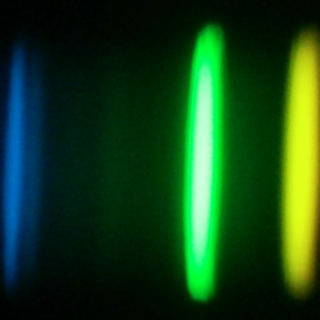Bibcode
Anders, F.; Chiappini, C.; Santiago, B. X.; Rocha-Pinto, H. J.; Girardi, L.; da Costa, L. N.; Maia, M. A. G.; Steinmetz, M.; Minchev, I.; Schultheis, M.; Boeche, C.; Miglio, A.; Montalbán, J.; Schneider, D. P.; Beers, T. C.; Cunha, K.; Allende Prieto, C.; Balbinot, E.; Bizyaev, D.; Brauer, D. E.; Brinkmann, J.; Frinchaboy, P. M.; García Pérez, A. E.; Hayden, M. R.; Hearty, F. R.; Holtzman, J.; Johnson, J. A.; Kinemuchi, K.; Majewski, S. R.; Malanushenko, E.; Malanushenko, V.; Nidever, D. L.; O'Connell, R. W.; Pan, K.; Robin, A. C.; Schiavon, R. P.; Shetrone, M.; Skrutskie, M. F.; Smith, V. V.; Stassun, K.; Zasowski, G.
Bibliographical reference
Astronomy and Astrophysics, Volume 564, id.A115, 24 pp.
Advertised on:
4
2014
Journal
Citations
210
Refereed citations
192
Description
Context. The Apache Point Observatory Galactic Evolution Experiment
(APOGEE) features the first multi-object high-resolution fiber
spectrograph in the near-infrared ever built, thus making the survey
unique in its capabilities: APOGEE is able to peer through the dust that
obscures stars in the Galactic disc and bulge in the optical wavelength
range. Here we explore the APOGEE data included as part of the Sloan
Digital Sky Survey's 10th data release (SDSS DR10). Aims: The
goal of this paper is to a) investigate the chemo-kinematic properties
of the Milky Way disc by exploring the first year of APOGEE data; and b)
to compare our results to smaller optical high-resolution samples in the
literature, as well as results from lower resolution surveys such as the
Geneva-Copenhagen Survey (GCS) and the RAdial Velocity Experiment
(RAVE). Methods: We select a high-quality (HQ) sample in terms of
chemistry (amounting to around 20 000 stars) and, after computing
distances and orbital parameters for this sample, we employ a number of
useful subsets to formulate constraints on Galactic chemical and
chemodynamical evolution processes in the solar neighbourhood and beyond
(e.g., metallicity distributions - MDFs, [α/Fe] vs. [Fe/H]
diagrams, and abundance gradients). Results: Our red giant sample
spans distances as large as 10 kpc from the Sun. Given our chemical
quality requirements, most of the stars are located between 1 and 6 kpc
from the Sun, increasing by at least a factor of eight the studied
volume with respect to the most recent chemodynamical studies based on
the two largest samples obtained from RAVE and the Sloan Extension for
Galactic Understanding and Exploration (SEGUE). We find remarkable
agreement between the MDF of the recently published local (d < 100
pc) high-resolution high-S/N HARPS sample and our local HQ sample (d
< 1 kpc). The local MDF peaks slightly below solar metallicity, and
exhibits an extended tail towards [Fe/H]= -1, whereas a sharper cutoff
is seen at larger metallicities (the APOGEE sample shows a slight
overabundance of stars with metallicities larger than ≃+0.3 with
respect to the HARPS sample). Both samples also compare extremely well
in an [α/Fe] vs. [Fe/H] diagram. The APOGEE data also confirm the
existence of a gap in the abundance diagram. When expanding our sample
to cover three different Galactocentric distance bins (inner disc, solar
vicinity and outer disc), we find the high-[α/Fe] stars to be rare
towards the outer zones (implying a shorter scale-length of the thick
disc with respect to the thin disc), as previously suggested in the
literature. Finally, we measure the gradients in [Fe/H] and
[α/Fe], and their respective MDFs, over a range of 6 < R <
11 kpc in Galactocentric distance, and a 0 < z < 3 kpc range of
distance from the Galactic plane. We find a good agreement with the
gradients traced by the GCS and RAVE dwarf samples. For stars with 1.5
< z < 3 kpc (not present in the previous samples), we find a
positive metallicity gradient and a negative gradient in [α/Fe].
Appendix A is available in electronic form at http://www.aanda.org
Related projects

Chemical Abundances in Stars
Stellar spectroscopy allows us to determine the properties and chemical compositions of stars. From this information for stars of different ages in the Milky Way, it is possible to reconstruct the chemical evolution of the Galaxy, as well as the origin of the elements heavier than boron, created mainly in stellar interiors. It is also possible to
Carlos
Allende Prieto